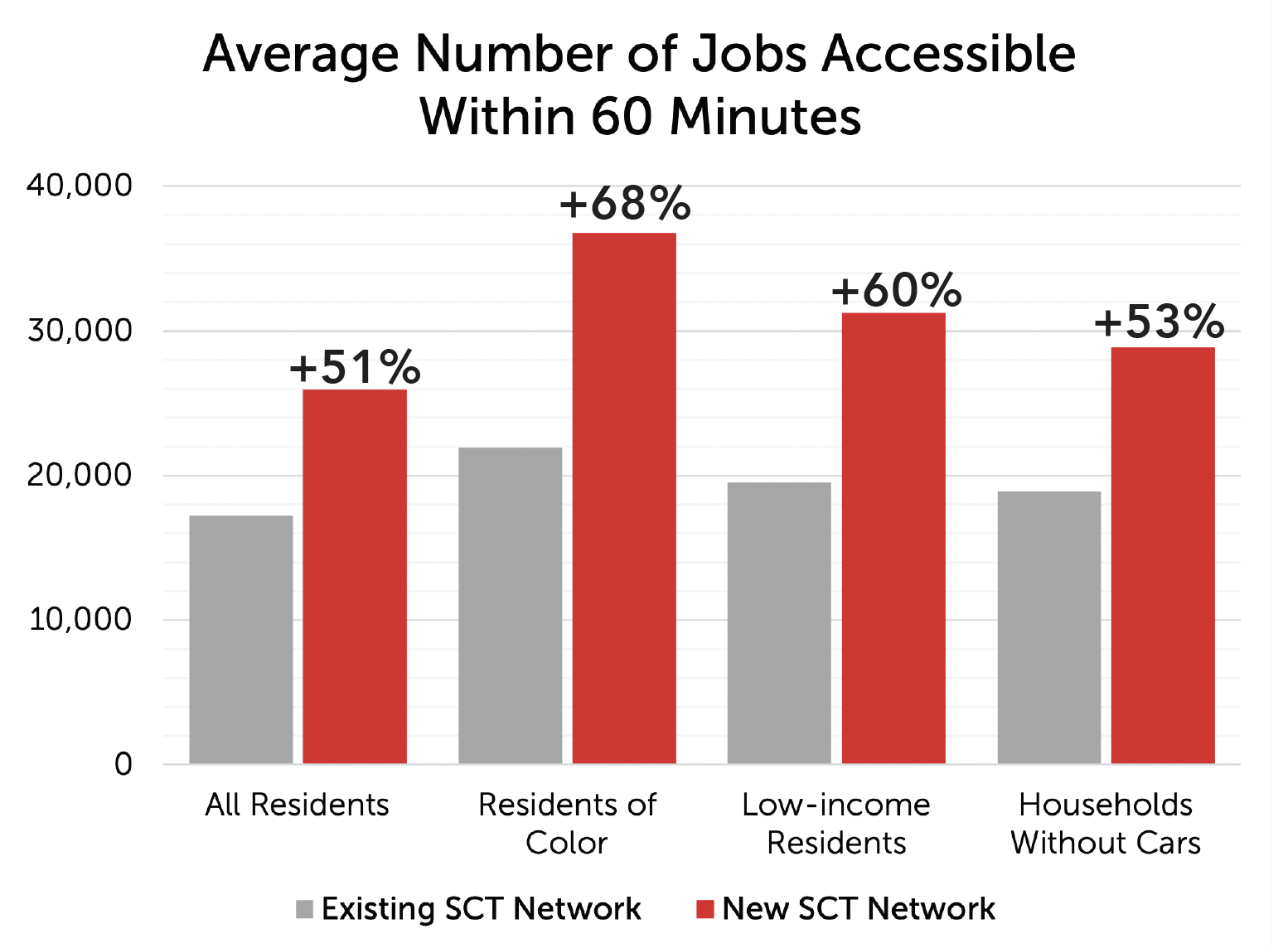by Scudder Wagg
Suffolk County is a vast and variegated place covering the eastern two-thirds of Long Island, New York. It includes a range of historic towns like Babylon, Huntington, and Port Jefferson, many of which grew up around the Long Island Rail Road. The western two-thirds of the county is largely developed in an car-oriented suburban pattern. That area includes about 90% of the county’s 1.5 million people and 520,000 jobs. The eastern third of the county is much more rural and includes the famous Hamptons, summertime retreat for many elite New Yorkers, the well-known Montauk Lighthouse, and protected Pine Barrens Forest.
On Sunday, October 29, Suffolk County Transit will implement a new bus network that we’ve worked with them to design. The redesign process began in mid-2020 with our team working with County staff to analyze the existing system. One key issue that arose in our initial work was the extent of reliability problems across the system due to outdated speed and travel time assumptions. The need to correct for slower speeds, sparked a conversation about investment more in transit to achieve better outcomes in many ways.
In early 2021, we worked with staff, stakeholders and the public in a conversation sparked by our Choices and Concepts Report. This report focused on key trade-offs, like ridership versus coverage, and showed two contrasting concepts for how to redesign the bus network, and assumed 15% more service to account for slower speeds. Based on feedback from the public, stakeholders, and staff, we developed a Draft Plan that prioritized higher ridership, and resulted in some loss of coverage. A key feature of the Draft Plan was much more consistent spans of service, with more evening and weekend service across most key corridors in the county.
While overall response to the Draft Plan was very positive, there were some specific concerns about coverage loss on some roads and the Final Plan was tweaked to add service back to a few areas. To address these coverage needs, and maintain the improved frequency and span , the County has made a commitment to increase overall service levels by nearly 30%, joining agencies like Tri-Met in Portland, Santa Cruz Metro, and Dallas’s DART in expanding service in the post-Covid transit recovery period.
While the increased service is a major boon, it is not enough to create a network of every 15-minute service in the vast areas of moderate density across western Suffolk County. A major focus of the plan, therefore, is to build a series of timed connection points, or pulses, in strategic locations across the county, like Amityville, Central Islip, Patchogue, and Riverhead. You can see those location on the network maps below as they are marked with a clock icon.
You can compare the old and new networks at this cool data viewer that we developed. Below are static maps of the existing network followed by the new network. Note the frequencies in the legend, without which these maps make no sense.
With more frequent service on many corridors, and timed connections, the average resident will be able to get to 50% more jobs in 60 minutes and low-income residents see an even bigger gain.
In addition to developing the network plan, we’ve been thrilled to provide continuing support to County staff as they’ve worked to implement this new network. We’ve helped to develop
- New schedules and printed timetables with more reliable travel times and clearer maps and information.
- An updated detailed network map for use at information kiosks across the county.
- A new schematic map (below) showing the overall structure of the network.
We’ve also provided a range of technical support and other materials to help County staff prepare to roll-out the new network and two of our staff will be on-site to help riders learn the new network in the first week.
So, thanks and congratulations to everyone at Suffolk County who worked hard to get this done. We hope that everyone who lives in, works in, or visits Suffolk enjoys the SCT New Network and we encourage locals to stay involved in advocating for more and better transit, as there are plenty of ripe opportunities to increase frequency, span, and coverage with more investment in transit in Suffolk.
Scudder Wagg is a Principal with Jarrett Walker + Associates and the head of our Arlington, Virginia office.
PS by Jarrett: If you’re wondering why the buses aren’t scheduled to meet the Long Island Rail Road trains, there’s an explainer for that!





Comments are closed.